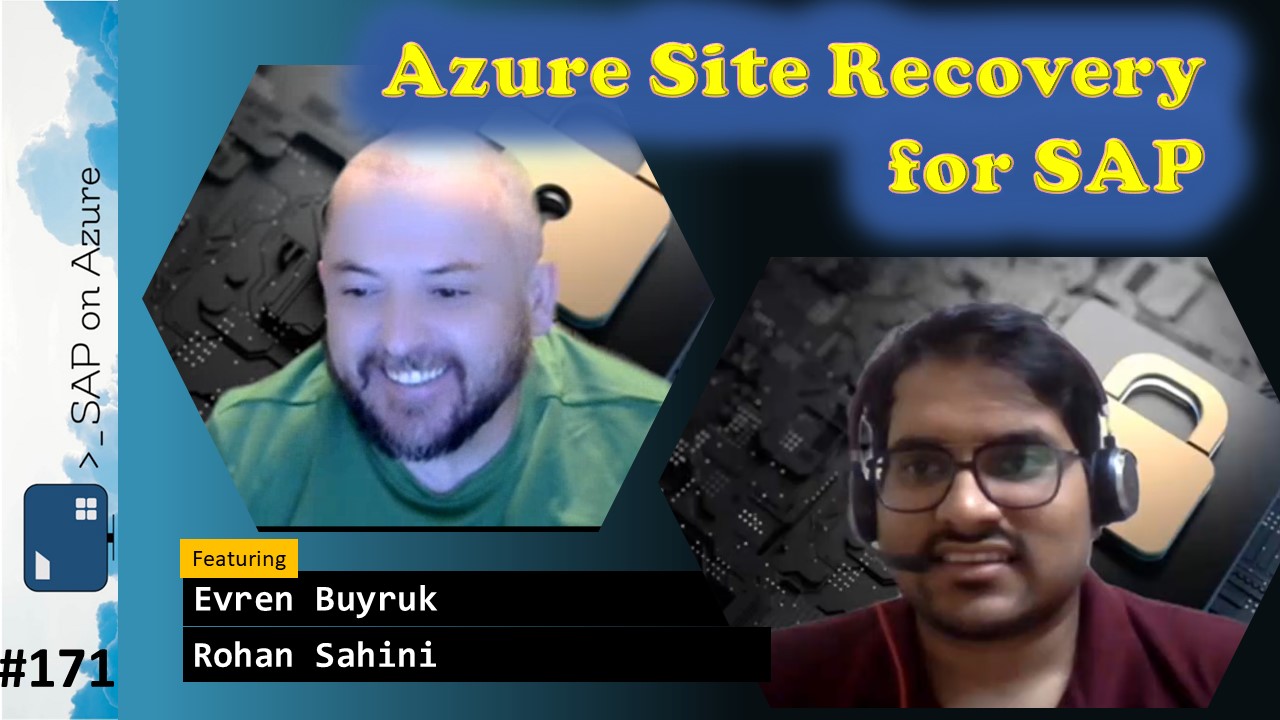Episode #171
Introduction
In episode 171 of our SAP on Azure video podcast we talk about Azure Disaster Recovery leveraging Azure Site Recovery with Evren Buyruk and Rohan Sahini. We take a look at the architecture and underlying platform, concepts for SAP on Azure. Then we look how Azure Site recovery can help protect your SAP systems and look at best best practices for replication, RTO & PRO and capacity.
If you have feedback, please fill out the survey here: https://forms.office.com/pages/responsepage.aspx?id=v4j5cvGGr0GRqy180BHbR9f3ns27wIpNkEpXVzCZTaVUNDNKMFEyQldIT1A3RUxEOTBQUUM4QldTQi4u
Find all the links mentioned here: https://www.saponazurepodcast.de/episode171
Reach out to us for any feedback / questions:
- Robert Boban: https://www.linkedin.com/in/rboban/
- Goran Condric: https://www.linkedin.com/in/gorancondric/
- Holger Bruchelt: https://www.linkedin.com/in/holger-bruchelt/
#Microsoft #SAP #Azure #SAPonAzure #ASR #Recovery
Summary created by AI
- Evren gives some background information on the differences between high availability and disaster recovery, and the concepts of Microsoft managed failover and customer managed failover. He also explains the importance of having a disaster recovery plan and the considerations for storage account failover.
- Evren talks about the Azure deployment options for SAP systems across availability zones, and the best practices for using Azure file shares, NFS, and pacemaker clusters. He also shows how to use Azure site recovery for app servers and HANA system replication or database replication for data tier.
- Rohan introduces Azure site recovery as a disaster recovery product and its value proposition. He also shows some statistics on the types and costs of outages, and the best practices for RTO and RPO considerations, capacity planning, and security.
- Rohan demonstrates how to create a virtual machine and activate Azure site recovery in a few steps. He also announces a new feature of Azure site recovery for shared disks, which is currently in private preview and will support high availability configurations with ZRS or LRS shared disks across regions.
- 0:00 Intro
- 1:50 Introducing Evren & Rohan
- 3:15 High Availability and Disaster Recovery
- 7:00 Microsoft Managed Failover vs Customer Managed Failover
- 17:10 RPO/RTO and SLA
- 21:30 HA on Application for Infralevel
- 23:50 Express Route
- 28:50 Hub Spoke concepts
- 31:00 Deployment Options without ASR Across Zones
- 34:05 ASR across regions
- 36:40 Azure Files Share vs Azure NetApp Files
- 39:50 Azure Site Recovery - Value Prop
- 41:30 Outages
- 42:25 Best Practices - Replication
- 44:30 RTO & RPO considerations
- 46:50 Capacity considerations
- 48:55 Demo
- 53:20 ASR for Shared Disks
- 1:01:40 Contacts
